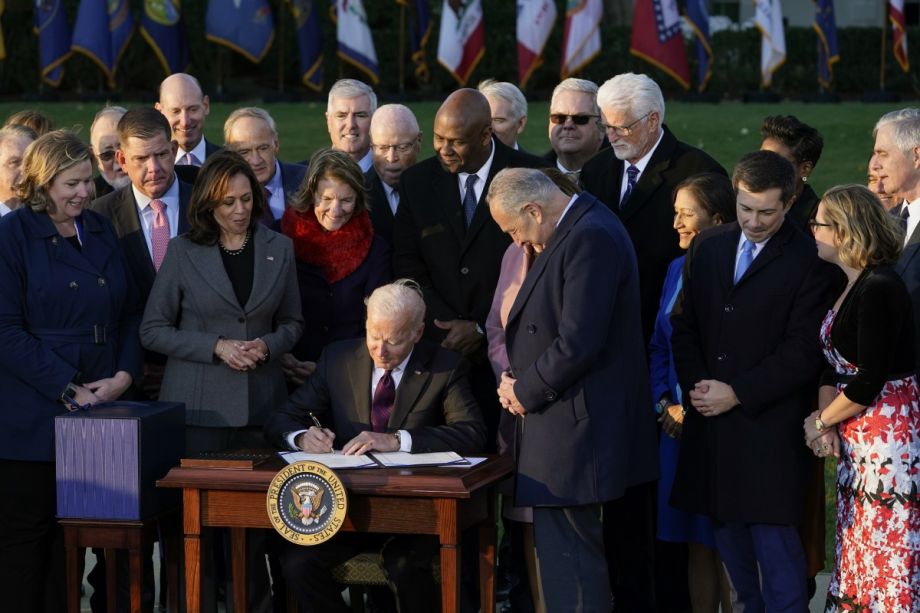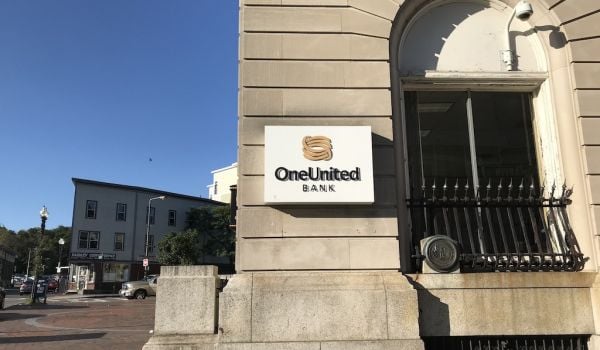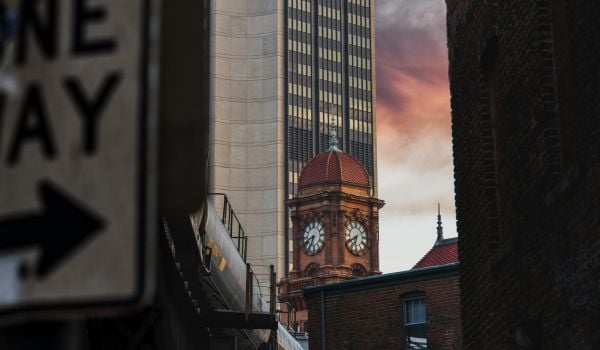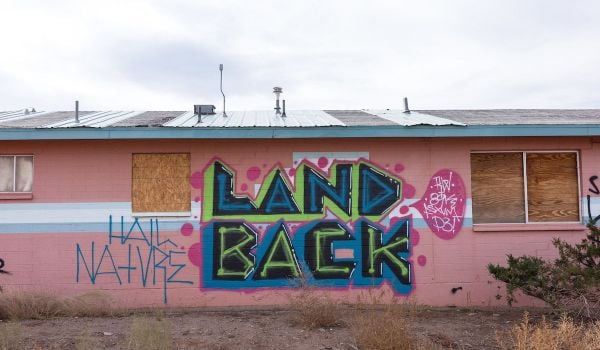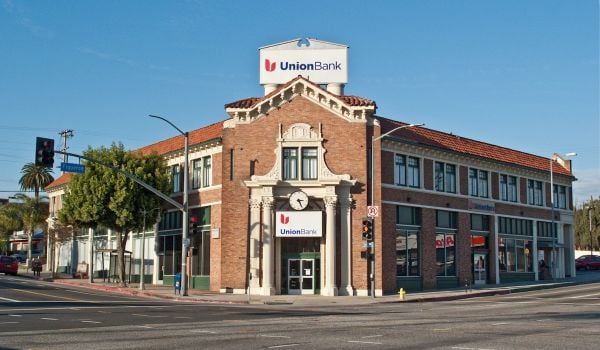When the economy works for you — when it lands you a dignified, living wage job or makes you a successful business owner or investor — so much of what makes it work for you stays hidden from view.
No one really sees how the Federal Reserve setting low interest rates stimulates demand for goods and services, pushing businesses to raise wages in order to compete for workers to meet that demand. No one really sees the underlying public foundation of the financial system — the Federal Reserve, federal deposit insurance, and bank regulators — that creates the conditions for small business owners to access the credit they use to grow, though not all of them have ever had the same level of access.
That’s largely by design.
Despite their headline-grabbing price tags — $1.9 trillion for the American Rescue Plan Act, $1.2 trillion for the infrastructure bill, $2.2 trillion for the most recent version of the Build Back Better Act — only some of that spending is going to be very visible.
The infrastructure bill is obviously going to have tangible benefits — bridges, roads, broadband, a modernized energy grid, new investments in passenger rail.
The current Build Back Better Act, which the Senate has said it aims to pass before Christmas, includes $65 billion to address part of the nation’s $80 billion public housing maintenance backlog, as well as $400 billion for universal pre-K and affordable child care — as well as a one-year extension of the expanded Child Tax Credit, which is already showing results in terms of reducing child hunger and poverty.
But much of the public spending that is coming out of the federal government over the next few years will be hidden from view. If all goes well with this hidden spending, things will just work better, or work for more people and communities — hopefully this time including communities that have been historically left behind or left out. Doing that will take work. For example, the local procurement processes that determine who builds the bridges and roads have never been very good at distributing those opportunities on a level playing field. And that’s for spending that’s relatively visible.
Here are some of those less visible slices of spending we’ll be keeping an eye on, along with some ways we keep informed about these programs as they move through the process to implementation.
Financing for cooperatives
The Build Back Better Act includes authorization and funding for a pilot under the Small Business Administration’s flagship 7(a) loan guarantee program to provide $500 million in loan guarantees for cooperatively-owned businesses without requiring a personal guarantee or entity guarantee.
As I’ve covered previously, the requirement of a personal guarantee has for decades prevented cooperatively-owned businesses from accessing any of the billions of dollars in federally guaranteed small business loans every year. Federal loan guarantees are intended to help provide credit to business owners who otherwise wouldn’t qualify to access credit. While many historically disinvested communities start co-ops because large corporations don’t view those communities as viable markets, the co-ops they start have never had the same access to federally-guaranteed loans as conventional businesses.
NCBA-CLUSA, a trade association for cooperatives, has advocated for years to remove the personal guarantee requirement from the 7(a) program, and remains a key source of updates about the pilot initiative as it makes its way through Congress.
Federal guarantees for mission-driven small business lenders
The Build Back Better Act also includes $281 million to fund and language to make permanent the SBA’s Community Advantage Pilot Program, which is set to expire next year.
The SBA created the Community Advantage program in 2011 as a pilot program to allow smaller, mission-driven, nonprofit lenders to gain access to 7(a) loan guarantees for small business loans up to $250,000. As I’ve reported on previously, the Community Advantage program was created because of the 7(a) program’s poor track record reaching communities of color and women.
There are currently 104 active Community Advantage lenders. Some are national in scope, some are statewide or regional, some are local. They’ve collectively made more than 5,300 Community Advantage loans since 2011. The Mission Lenders Working Group has been lobbying for years to make the Community Advantage pilot program permanent, alongside others like the Association for Enterprise Opportunity.
Small Dollar Small Business Loans Directly from SBA
The Build Back Better Act currently includes $3.3 billion for a new program to offer direct loans from the SBA, up to $150,000 for most small businesses or up to $1 million for small manufacturers or small government contractors.
It’s not guaranteed to become a reality. Banking and credit union industry lobbyists are up in arms, saying they’ve got it covered. SBA Administrator Isabel Guzman argues that small businesses are telling her they don’t, so let her agency do it.
The SBA does still do some direct lending, as opposed to guaranteeing loans made by private lenders. Throughout the pandemic, as with other natural disasters, it has been directly making Economic Impact Disaster Loans to affected businesses.
Technically, the agency still has the authority to do more — it just stopped using it. Up until October 1985, the SBA mainly provided direct business loans to qualified small businesses. From October 1985 to October 1994, SBA direct business loans were limited to qualified small businesses owned by individuals with low incomes or located in areas of high unemployment, owned by Vietnam-era or disabled veterans, owned by people with disabilities or organizations employing them, or certified as minority-owned. The last non-emergency SBA direct small business loan went out in 1998, under the agency’s Disabled Assistance Loan program. Under previous administrations, the SBA has consistently told Congress it was less costly for the agency to guarantee loans instead of making them directly.
Neighborhood Homes Investment Tax Credit
The Build Back Better Act includes an earlier proposal called the “Neighborhood Homes Investment Act,” which creates a system of tax credits to support individual low-to-moderate income owners of 1-4 unit homes, with a focus on neighborhoods where home values do not currently support financing for new construction or substantial renovation.
The Neighborhood Homes Investment Tax Credit would be modeled partly after the Low-Income Housing Tax Credit, created in the late 1980s. That earlier program has long been proven to work for supporting larger developers to build or preserve multi-family housing projects, often with 100 or more units.
Like the LIHTC program, the new tax credit would be allocated by each state based on population, with unused credits able to roll over. Supporters envision that the new tax credit would allow developers of smaller properties to acquire and rehab homes while still being able to sell them at prices that are affordable to households at or below 140% of area median income. They estimate this system would support the construction or rehab of 500,000 properties over ten years.
The initial proposal, introduced on the Senate floor by Senators Ben Cardin (D-MD) and Rob Portman (R-OH), came about after advocacy by groups like the National Community Stabilization Trust and many community development lenders including Enterprise Community Partners, the Local Initiatives Support Corporation, and also the National Association of Affordable Housing Lenders.
Funding for Community Land Trusts
The Build Back Better Act currently includes $500 million “to create, expand, and maintain community land trusts and shared equity homeownership, including through the acquisition, rehabilitation, and new construction of affordable, accessible housing.” There are now at least 270 community land trusts across the country, representing around 20,000 rental units and 15,000 homeowner units, according to Fannie Mae.
As Next City has reported on previously, community land trusts are picking up momentum in more and more places as a tool for preventing displacement and the loss of existing affordable housing. They’re also going beyond housing, addressing commercial and cultural displacement.
To put it all in perspective, though, the state of California by itself recently put up $500 million to support community-owned housing, including — though not limited to — community land trusts.
Before Build Back Better
A few programs we’ve also been watching were passed earlier, like the Emergency Capital Investment Program, which came out of the budget bill passed at the end of 2020. The $9 billion fund will make direct investments into community banks and credit unions that are federally certified as community development financial institutions or minority-depository institutions.
As I’ve covered previously, ECIP is a massive shot in the arm for these institutions, positioning them to jumpstart economic growth after the pandemic in communities that are usually the last to feel it. Applicants spent much of the year drafting applications to the program, which were due in September, with help from groups like the Community Development Bankers Association and Inclusiv, a trade association for credit unions that focus on community development. The Department of the Treasury has not yet announced the recipients — it received 204 applications requesting a total of more than $12 billion, so not everyone will get what they requested.
There’s also the State Small Business Credit Initiative, re-launched by ARPA in March. As Next City has reported on previously, the initiative provides flexible funding to states to create or fund programs that leverage at least $10 in private sector financing for every $1 in funding from the initiative. The original initiative, created in response to the Great Recession, provided $1.4 billion in funding to states, which in turn supported 21,000 loans and investments totaling $10.7 billion.
This time around, SSBCI itself is providing $10 billion, with the same leverage required — applicants must show how they plan to turn $1 from the initiative into $10 in small business loans. Applications opened earlier this month, and are due by February 11 next year. The Council of Development Finance Agencies helped lobby for the creation of SSBCI, and continues to be a resource for the state economic development agencies and departments who are interested in accessing the funding.
So far there’s been one pleasant surprise found inside SSBCI — the new guidelines for the program released this month explicitly mention that the funds may be used to support employee-ownership buyouts of existing businesses.
And there’s so much more out there, in Build Back Better or previous bills. The Brookings Institute is calling the Build Back Better Act “a milestone in place-based solutions,” citing many other funding streams. But it will now take hard work to make sure the funds live up to the promise of racial equity from the Biden-Harris Administration.
To borrow a phrase from Action Center on Race and Economy Co-Director Saqib Bhatti, “You don’t achieve racially equitable results if you don’t have the intentionality.”
This article is part of The Bottom Line, a series exploring scalable solutions for problems related to affordability, inclusive economic growth and access to capital. Click here to subscribe to our Bottom Line newsletter.

Oscar is Next City's senior economic justice correspondent. He previously served as Next City’s editor from 2018-2019, and was a Next City Equitable Cities Fellow from 2015-2016. Since 2011, Oscar has covered community development finance, community banking, impact investing, economic development, housing and more for media outlets such as Shelterforce, B Magazine, Impact Alpha and Fast Company.
Follow Oscar .(JavaScript must be enabled to view this email address)



